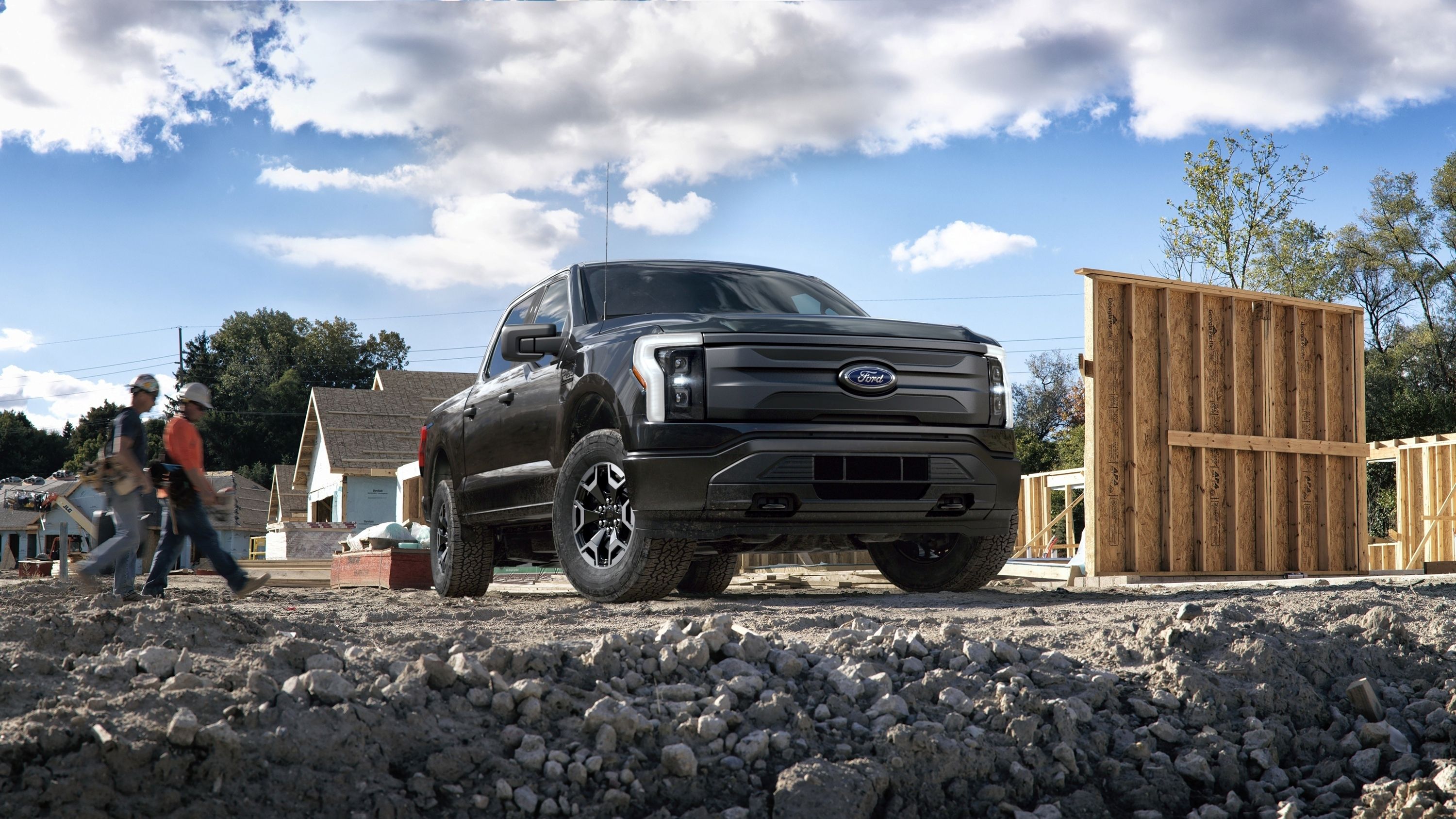
How Ford Improved The F-150’s Fuel Efficiency Over Five Decades
The average fuel economy for a vehicle in 1975, the year Ford released the first F-150, was around 13 miles per gallon. In 2024, the average is around 28 MPG. We’ve more than doubled the average fuel economy over the last fifty years or so, and the F-150 has followed suit, launching at 10 MPG, with an entry-level 4WD model delivering 20 MPG in 2024.
Related
Ford F-150 Generations: Everything You Need To Know In One Place
After 14 Ford F-150 generations, a lot has changed with one of America’s favorite trucks. Read all about it here.
The F-150 is an industry leader in many ways, but few would say that fuel economy is on that list, and that’s where they’d be wrong. That’s exactly why it makes a perfect centerpiece for a timeline of major advances in fuel economy. If you really want to know what prices at the pump looked like in a given era, why not look at the heaviest piece of metal on the road?
The First F-150: An Oil Crisis Compromise
|
1975 Ford F-150 |
|
|---|---|
|
Engine |
4.9-liter 6-cylinder |
|
Power |
113 hp |
|
Fuel Economy (combined) |
10 MPG |
Ford launched the F-150 shortly after a time of declining fuel economy. Yes, we’re talking about the classic muscle car era. From 1966 to 1973, the average fuel economy took a small dip from around 13.5 MPG to 12.9 MPG. Unsurprisingly, this was a time of steady gas prices. A gallon of gasoline would cost you just $0.31 in 1962. A decade later, the price had only climbed a nickel to $0.36 in 1972, the same price it had been since 1970.
Richard Nixon signed the Environmental Protection Agency into action via executive order in 1970, setting forth the National Ambient Air Quality Standards, or NAAQS. This would task the EPA with setting emission standards for new vehicles and running tests to ensure compliance. The creation of the EPA set the stage for the launch of the F-150.

Related
Ford Is The Automotive Industry’s Environmental Hero
According to JUST Capital, it’s the most responsible automotive manufacturer.
The 1975 Ford F-150 was launched a couple of years into the 1972 oil crisis, with gas prices skyrocketing to $0.57 per gallon. In this era, you can observe the teeter-totter effect of fuel economy and gas prices: when gas is cheap, it’s easier to sell cars and trucks that emphasize power and generous interior space. When gas prices go up, you see Ford retooling the 385 Cobra-Jet facility to produce 1.6-liter engines for the Escort.
The Ford F-Series dates back to 1948, but the F-150 was launched in the early 1970s as a direct response to tightening emissions standards. It sits right between the F-100 and the F-250. The F-150 has definitely been called a “gas guzzler” more than a few times, but it was actually developed to counter high gas prices. It offers a bit more power than the 158-hp F-100 while burning less gas than the 8 MPG F-250.
1973-1991: Losing Weight
|
1987 Ford F-150 |
|
|---|---|
|
Engine |
4.9-Liter 6-Cylinder |
|
Power |
145 hp |
|
Fuel Economy (combined) |
16 MPG |
The decades following the start of the 1972 oil crisis would prove to be the most significant era of improving fuel economy in the automotive industry’s history. In 1973, a typical vehicle could expect to get around 13 MPG. By 1991, that number had shot up to around 20 MPG, where it would stay until 2004.
Gas prices spiked again in the early 1980s to more than a dollar a gallon for the first time in history, peaking at $1.31 in 1981 and settling back down to $1.14 by 1991. Adjusting for inflation, this actually put 1991 gas prices at just over half the cost of 1981 gas prices, from $4.73 down to $2.66 over the course of a decade in 2024 dollars.
As for the F-150, the truck got around 10 MPG in 1975 with a 6-cylinder engine and 4WD. By 1991, a 2WD model with a 6-cylinder engine would get around 16 MPG. One of the biggest changes between these two trucks would be curb weight. In the 1970s, a typical F-150 weighed a minimum of 6,000 lbs. In 1991, the average weight was closer to 4,000 lbs. Cutting truck weight down is an issue automakers are still facing to this day, and while the F-Series is regarded to be a major road hog, Ford has actually been at the forefront of creating more economically built pickups for decades.

Related
An Overwhelming Majority Of Americans Think Trucks And SUVs Are Getting Too Big
Truck owners and non-truck owners agree that they’re not safe for pedestrians and cyclists.
The 1980s were a significant period for the F-150. The truck had already established itself as America’s best-selling pickup in 1977 and would graduate to the best-selling vehicle overall in 1981. Engine technology hadn’t exactly flatlined, but an entry-level 6-cylinder F-150 would crank out 113 hp in 1975 and just 115 hp in 1985. So, if Ford wanted to bring those MPGs and HPs, they’d have to get creative.
Aiming to improve fuel economy without sacrificing performance, Ford’s engineers focused on trimming body weight, replacing hundreds of pounds of steel with aluminum or plastic. The truck’s fuel economy only improved by 2 MPG from its launch up until the mid-1980s. Then, in 1987, with the launch of the F-Series’ eighth generation, the truck’s fuel economy jumped from 12 MPG to 16 MPG with a base 6-cylinder engine. The lighter weight, plus the addition of fuel injection to the 4.9-liter i6, also brought the base power output up to 145 hp.

Related
Revised Fuel Economy Standards Is Good News For Detroit’s Big Three
The finalized ruling will see a lower CAFE requirement by 2031.
In the twenty or so years following the oil crisis, improved fuel economy on an industry-wide level was driven more by legislation and market demand than by any single breakthrough in engine technology. At one point, we thought electronically-controlled cylinder deactivation would be the way forward, but the tech just wasn’t there yet, and the resulting experiments, like the Cadillac 8-6-4 engine, were clunky and unreliable.
Ford’s method of stripping body weight wherever it could without compromising structural integrity worked like a charm, and it remains a major part of their strategy in engineering the F-Series to this day.
2004-2017: EcoBoost And Improved Compression Ratios
|
2004 Ford F-150 |
|
|---|---|
|
Engine |
4.2-Liter 6-Cylinder |
|
Power |
202 hp |
|
Fuel Economy (combined) |
16 MPG |
Fuel economy basically plateaued for more than a decade as the Persian Gulf War ended in 1991, and gas prices stabilized through the 1990s, hitting a low of $1.06 in 1998, or about two bucks per gallon, adjusting for inflation. Bringing your MPG numbers up just wasn’t a major priority in the 1990s. The F-Series remained the top-seller in this era, with other popular autos including commuters like the Honda Accord and big family vehicles like the Dodge Caravan and Jeep Cherokee. SUVs were around in the 1990s but didn’t have a real popularity boom until the end of the decade and the start of the next one (a trend that showed no signs of slowing until very recently).
The overall fuel economy boost from 2004 to 2017 was relatively modest, from around 20 MPG in 2004 to just over 22 MPG in 2017, but this period is marked by a long list of new developments in engine tech and automotive engineering. Outside the proliferation of hybrid vehicles, improved compression ratios may be the most significant advancement for this era.

Related
Cars With the Best MPG of 2024
Compression ratio refers to the volume that your piston can squeeze. The more you can compress the air and fuel, the smaller you can get it and the stronger your combustion. Compression ratio has always been a balancing act. Too high and the fuel ignites by itself, creating a “knocking” that blows the engine apart. Too low, and you get the wimpy, underpowered V8s of the 1970s when they took the knock-preventing lead out of gasoline and had oversized sedans limping along.
In 2012, Mazda developed the SKYACTIV-G engine, boasting the highest compression ratio in a mass-produced engine, at 14:1. This basically meant that it didn’t waste a drop of gasoline. Ford would be one of the many automakers to follow suit. In 2004, an F-150’s compression ratio was around 9:1. By 2018, the F-150 was averaging a compression ratio of 12:1.

Related
Cheapest Cars With the Best MPG of 2024
Ford also added EcoBoost engines to its F-150s throughout the 2010s. The first, in 2011, saw the 3.7-liter 6-cylinder 4WD model averaging 18 MPG. EcoBoost engines weren’t exactly a new technology when they were introduced. They were just a solid combination of direct injection and turbocharging to increase fuel economy without compromising performance.
For all of these developments under the hood, one of the biggest changes in this era would be the F-150’s switch over to aluminum body panels. In 2014, the lightest F-150 weighed in at 4,685 lbs, and the heaviest at 6,113. By 2017, the Ford F-150’s curb weight had been brought down to a minimum of 4,051 lbs and a maximum of 5,697, thanks to Ford’s focus on aluminum bodies and improvements in aluminum alloys.

Add CarBuzz to your Google News feed.
|
2017 Ford F-150 |
|
|---|---|
|
Engine |
2.7-Liter EcoBoost 6-Cylinder |
|
Power |
325 hp |
|
Fuel Economy (combined) |
22 MPG |
All told, the fuel economy of a 6-cylinder 4WD F-150 went from around 15 MPG in 2004 to 19 MPG in 2017. Using downsized turbocharged motors proved to be an effective tactic, not just in the pickup truck segment, but across the board.

Related
How A Turbocharger Works
The basic principles of turbocharging
2021-Present: The Electric Generation
|
2021 Ford F-150“Powerboost” |
|
|---|---|
|
Engine |
3.5-Liter 6-Cylinder Hybrid |
|
Power |
430 hp |
|
Fuel Economy (combined) |
24 MPG |
Hybrids are a very big deal. But it’s worth remembering that they’re building on a long legacy of improvements in engine efficiency and body design. Slapping a couple of electric motors onto the rear axle of a 1974 Buick Estate Wagon probably wouldn’t get the car’s pitiful 9 MPG fuel economy that much higher.
The F-Series started incorporating hybrid powertrains with the fourteenth generation in 2021, with the F-150 debuting the first Ford “PowerBoost” powertrain. An electric motor is paired to a 3.5-liter EcoBoost 6-cylinder for a 4WD system delivering 24 MPG combined. In 2020, a 3.5-liter 6-cylinder 4WD would get you around 18 MPG. That’s a six-point jump in a single model year.
|
2023 Ford F-150 Lightning Lariat |
|
|---|---|
|
Engine |
Dual Permanent Magnet Electric Motors |
|
Power |
430 hp |
|
Range |
320 Miles |
2023 saw the introduction of the Ford F-150 Lightning, with an estimated range of 320 miles on the Extended Range Battery available in the XLT and LARIAT trims. While it’s tempting to view the proliferation of EVs as essentially rendering more than a century of engineering obsolete, remember that there’s a lot more to fuel economy than simply building more efficient engines, and the F-150’s shrinking curb weight has been, at times, a greater contributor to its MPG estimates than anything going on under the hood, and we’re still talking about efficient engineering when we’re talking about EVs, we just call it range.







